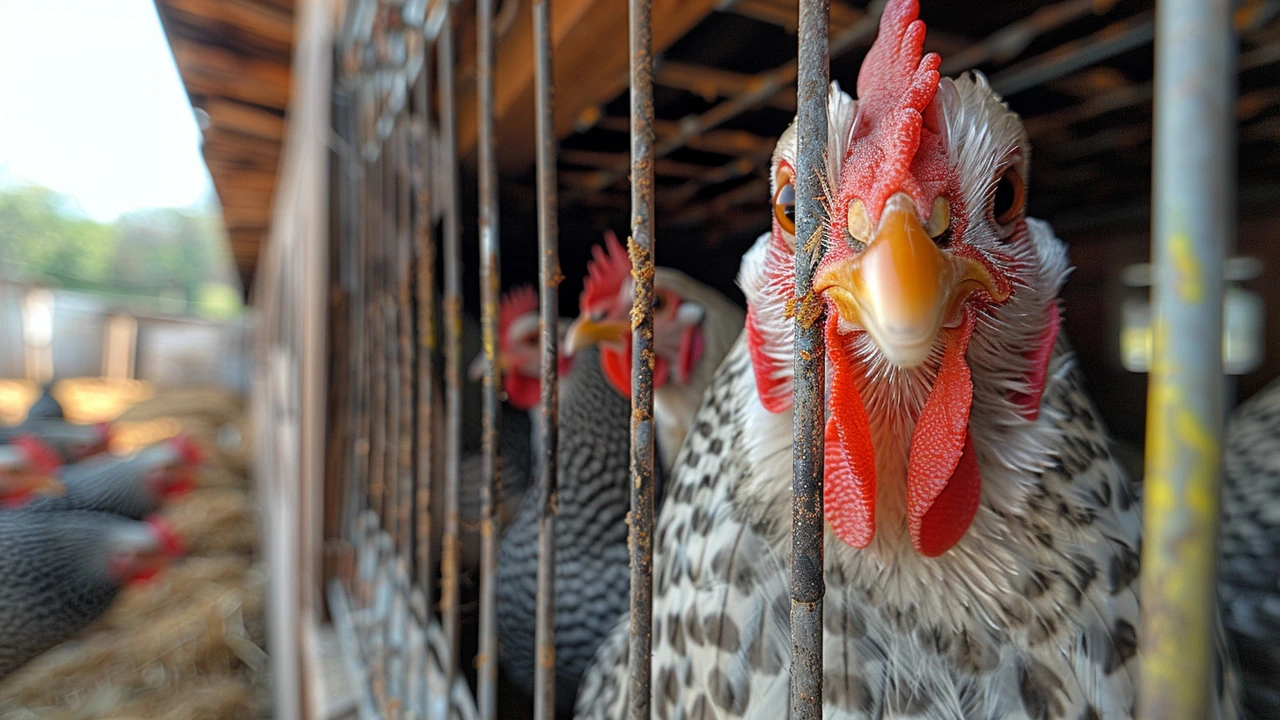The Unseen Risks in Farming: Exploring the Connection Between Bird Flu and Chicken Litter in Dairy Herds
Bird flu outbreaks have recently raised alarms across the agricultural community, affecting multiple dairy cow herds in the United States. A total of 34 herds across nine states have reported incidents, raising critical concerns among dairy farmers and public health officials. This situation has sparked a debate over the safety and health implications of using animal by-products, such as chicken litter, in the feed and maintenance of other farm animals.
What is Chicken Litter?
Chicken litter consists of a mixture of chicken feces, feathers, and bedding materials, which are predominantly used as fertilizer and feed supplement for cattle. While it provides a good nutrient profile, conducive for agricultural uses, this practice has come under scrutiny due to potential health risks. Significant among these concerns is the possibility of transmitting pathogens that could lead to diseases such as bird flu.
Current Regulations and Controversy
While the federal government has not set specific guidelines on this practice, certain states like California have implemented bans on the use of poultry litter for lactating dairy cows. This disparity in regulatory frameworks across states complicates the implementation of standardized health measures.
A recent uptick in bird flu cases among dairy cows has caused experts to question if contaminated chicken litter might be a contributing factor. Studies indicate that pathogens such as salmonella and E. coli can survive in chicken litter, potentially housing the bird flu virus.
Despite these concerns, experts such as Jodie Guest, the Senior Vice Chair of the Department of Epidemiology at Emory University’s Rollins School of Public Health, caution that conclusive evidence is still lacking. They underscore the complexity of disease transmission and the varying factors that could influence outbreak patterns.
Possible Transmission Routes
Officials from the Department of Agriculture suggest that wild migratory birds could be the primary culprits in spreading the disease. Additionally, there’s speculation that infection could propagate among cows through unpasteurized milk, a vehicle for cow-to-cow transmission.
In light of these risks, the FDA, in a 2008 survey, reported that merely 1% of poultry litter was being fed to cattle. This small percentage indicates a limited, although still significant, use that could pose risks if not managed carefully. Regulations require that poultry litter and feed from sites with infected birds should be destroyed to prevent further spread of the disease.
Broader Implications and Future Considerations
This ongoing issue highlights the broader implications of using animal by-products in farm management. It prompts a reevaluation of farming practices, urging more thorough inspections and tighter controls to prevent similar outbreaks in the future.
While the agricultural industry seeks to maintain sustainability and efficiency, it must also consider the potential health risks associated with the reuse of animal waste. The ongoing debates and research into the safety of chicken litter illustrate the complex balance that must be achieved between agricultural productivity and public health safeguards.
In conclusion, as investigations continue and further research is conducted, it is imperative for stakeholders in the agricultural sector to stay informed about best practices and emerging health risks. Coordination between farmers, regulators, and health experts is vital in devising strategies that safeguard both animal and human health without compromising agricultural output.






Write a comment